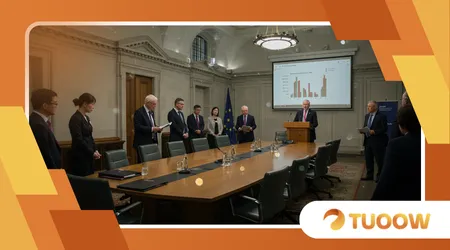Bank of England Cuts Rates: What It Means for British Finances in 2025

The Bank of England cuts rates, a pivotal move in May 2025, slashing the base rate to 4.25% from 4.5%.
This decision, driven by easing inflation and global trade uncertainties, ripples through British households, businesses, and investors.
Why does this matter? It reshapes borrowing, saving, and spending in a nation navigating economic headwinds.
This article unpacks the implications, offering clarity on how the Bank of England cuts rates affects your finances.
From mortgages to savings, we explore real-world impacts with practical examples, grounded in current data, to help you make informed decisions in 2025.
The backdrop is complex. Inflation, at 2.6% in March 2025, hovers above the Bank’s 2% target, while GDP growth forecasts climb to 1% for the year.
Yet, Donald Trump’s looming tariffs threaten global trade, prompting caution.
The Monetary Policy Committee’s (MPC) 5-4 vote revealed a split: two members favored holding rates, two pushed for a deeper cut.
This division signals uncertainty, making the Bank of England cuts rates a delicate balancing act. For Britons, it’s a moment to reassess financial strategies.
Let’s dive into the key areas affected, with insights to guide you through 2025’s economic landscape.
Mortgages: Relief for Borrowers, but Patience Required
Homeowners rejoice as the Bank of England cuts rates, but the relief is nuanced. Tracker mortgage holders, roughly 591,000 Britons, see immediate savings.
UK Finance estimates a £29 monthly reduction for the average tracker mortgage.
For example, Sarah, a Manchester teacher, saves £350 annually on her £150,000 tracker loan, easing her budget.
However, fixed-rate mortgage holders, comprising 85% of the market, must wait for deals to expire.
The Bank of England cuts rates sparks a mortgage price war. Lenders like HSBC and NatWest now offer sub-4% fixed rates, a boon for the 1.6 million homeowners remortgaging in 2025.
Yet, Nicholas Mendes, a mortgage expert, warns that rates won’t plummet unless the base rate hits 2.5%. This tempers expectations.
++ Essential Tax Deadlines Approaching: Are You Prepared?
For instance, John, a London freelancer, hopes to refinance his £300,000 mortgage but finds savings modest at current rates.
Caution prevails. The Bank of England cuts rates doesn’t guarantee steep discounts. Lenders may not fully pass on reductions to standard variable rates (SVRs), averaging 7.38%.
Homeowners should shop around, as loyalty rarely pays. With economic volatility, locking in a fixed rate now could shield against future rate hikes if inflation rebounds.

Savings: A Squeeze on Returns
Savers face a squeeze as the Bank of England cuts rates. Easy-access accounts, popular among cautious Britons, will likely see yields drop.
Before the cut, top easy-access rates hovered at 4.8%, but banks may now trim these to 4.5% or lower.
For example, Emma, a Leeds retiree with £20,000 in savings, could lose £60 annually if her rate falls by 0.3%.
Also read: Interest Rate Hikes: What Savers and Borrowers Need to Know Right Now
Fixed-rate savings accounts offer a hedge. With the Bank of England cuts rates, locking in a one-year bond at 4.7% before further reductions is wise.
The Guardian notes competitive products remain, urging savers to act swiftly. However, inflation at 2.6% erodes real returns, leaving savers in a bind. Should you sacrifice flexibility for a higher rate?
The table below shows how savings returns shift post-rate cut, assuming a £10,000 deposit:
| Account Type | Pre-Cut Rate | Post-Cut Rate | Annual Return (Pre-Cut) | Annual Return (Post-Cut) |
|---|---|---|---|---|
| Easy-Access | 4.8% | 4.5% | £480 | £450 |
| One-Year Fixed Bond | 4.9% | 4.7% | £490 | £470 |
| Two-Year Fixed Bond | 4.6% | 4.4% | £460 | £440 |
Savers must weigh liquidity against yield. With more cuts expected, securing a fixed rate now could preserve returns in a declining rate environment.
Read more: UK MP Proposes Law to Protect Community Sports Facilities
Business Borrowing: A Lifeline with Limits
The Bank of England cuts rates offers businesses a lifeline. Lower borrowing costs ease pressure on firms grappling with tax hikes and tariff threats.
Chancellor Rachel Reeves hailed the cut as “significant” for household and business finances.
Small businesses, like a Bristol café borrowing £50,000, could save £150 monthly on a variable-rate loan, freeing cash for growth.
Yet, the relief is tempered. Banks remain cautious, tightening lending criteria amid economic uncertainty. The MPC’s split vote signals hesitancy, with some members wary of persistent inflation.
Firms must demonstrate robust cash flow to secure loans, limiting access for startups. For instance, a tech startup in Cambridge might struggle to borrow despite lower rates.
Long-term, the Bank of England cuts rates could spur investment if confidence grows. The services sector, driving 0.6% GDP growth in Q1 2025, may benefit most.
However, Trump’s tariffs could dampen export-driven growth, forcing businesses to pivot domestically. Strategic planning is key firms should lock in loans now but brace for volatility.
Consumer Spending: A Cautious Boost
When the Bank of England cuts rates, consumers feel a nudge to spend. Lower borrowing costs make car loans and credit cards more affordable.
For example, a £10,000 car loan at 6% instead of 6.5% saves £25 monthly. Yet, with inflation at 2.6%, real wages barely budge, curbing enthusiasm. Will Britons spend or save in this climate?
Retail faces mixed signals. The Bank of England cuts rates, but consumer confidence remains fragile, dented by tariff fears.
Most firms expect weak demand in 2025, though some predict a slight uptick later. Retailers like Marks & Spencer may see modest gains if household budgets ease, but luxury spending lags.
Credit card users benefit marginally. A £5,000 balance at 19% APR instead of 19.5% saves £25 annually.
However, high debt levels £1.5 trillion in UK household debt limit the cut’s impact. Consumers should prioritize debt repayment over new spending to avoid tariff-driven price hikes.
Inflation and Economic Outlook: Navigating Uncertainty
The Bank of England cuts rates to cushion growth, but inflation looms. At 2.6% in March 2025, it’s above the 2% target, with risks of “greedflation” as firms hike prices.
]Catherine Mann, an MPC member, warns businesses must restrain pricing power before further cuts. This tension shapes the economic outlook.
Tariffs pose a wildcard. The Bank predicts a 0.3% growth slowdown over three years due to Trump’s policies. Yet, Q1 2025’s 0.6% GDP growth beat expectations, offering hope.
Like a ship navigating stormy seas, the UK economy must balance growth and inflation. Businesses and consumers alike need agility.
Future cuts hinge on data. Goldman Sachs predicts rates at 3% by February 2026, but persistent inflation could stall progress.
Households should budget conservatively, anticipating price pressures. The Bank of England cuts rates, but it’s no panacea prudence is essential in 2025.
Investment Markets: Opportunities Amid Volatility

The Bank of England cuts rates stirs investment markets. Lower rates boost equities, as cheaper borrowing lifts corporate profits.
The FTSE 100 rose post-cut, reflecting optimism. Investors like Priya, a Birmingham analyst, shift toward UK-focused funds, betting on domestic growth.
Bonds face pressure. Falling rates reduce yields, pushing investors toward riskier assets. However, tariff-driven inflation could spike yields later, creating volatility.
Diversifying across equities and fixed-income assets is crucial. For instance, a balanced portfolio with 60% stocks and 40% bonds mitigates risks.
Currency markets react too. The pound dipped post-cut, reflecting trade deal uncertainties. Exporters benefit, but importers face higher costs.
Investors should monitor global trends, as the Bank of England cuts rates amplifies external pressures. A cautious, diversified approach is key in 2025.
Practical Steps for Britons in 2025
Action is critical as the Bank of England cuts rates. Homeowners should compare mortgage deals, prioritizing fixed rates for stability.
Savers must lock in high-yield bonds before rates fall further. Businesses need to secure loans early, anticipating tighter lending conditions.
Consumers should tackle high-interest debt, like credit cards, to free up cash. Investors can explore UK equities but should diversify to hedge against volatility.
Budgeting for tariff-driven price hikes is wise. The Bank of England cuts rates, but proactive planning ensures financial resilience.
Consider an analogy: managing finances now is like tending a garden in unpredictable weather. You plant strategically, prune excesses, and protect against storms.
Britons must cultivate their financial health with care, leveraging the Bank of England cuts rates to grow stronger in 2025.
Conclusion: Seizing Opportunities in a Shifting Landscape
The Bank of England cuts rates, a beacon of relief in a turbulent 2025. From cheaper mortgages to cautious business borrowing, the impacts are far-reaching.
Yet, inflation, tariffs, and MPC divisions demand vigilance. Britons must act remortgage, save smart, invest wisely to thrive.
This isn’t just a rate cut; it’s a call to adapt. Will you seize the moment to secure your financial future?
With 1.6 million mortgages expiring and growth forecasts at 1%, the stakes are high. Stay informed, plan strategically, and let the Bank of England cuts rates be your springboard to stability in 2025.
Frequently Asked Questions
**1. How does the *Bank of England cuts rates* affect my tracker mortgage?**
Tracker mortgage payments drop immediately, saving about £29 monthly for a typical £150,000 loan. Compare deals to maximize benefits.
**2. Will savings rates fall further after the **Bank of England cuts rates?
Yes, easy-access rates may dip to 4.5% or lower. Lock in fixed-rate bonds at 4.7% to preserve returns.
3. Can businesses borrow more easily now?
Lower rates reduce loan costs, but banks remain cautious. Strong cash flow is key to securing funds in 2025.
**4. Should I invest after the **Bank of England cuts rates?
UK equities may rise, but diversify across stocks and bonds to manage tariff-driven volatility. Monitor global trends closely.
